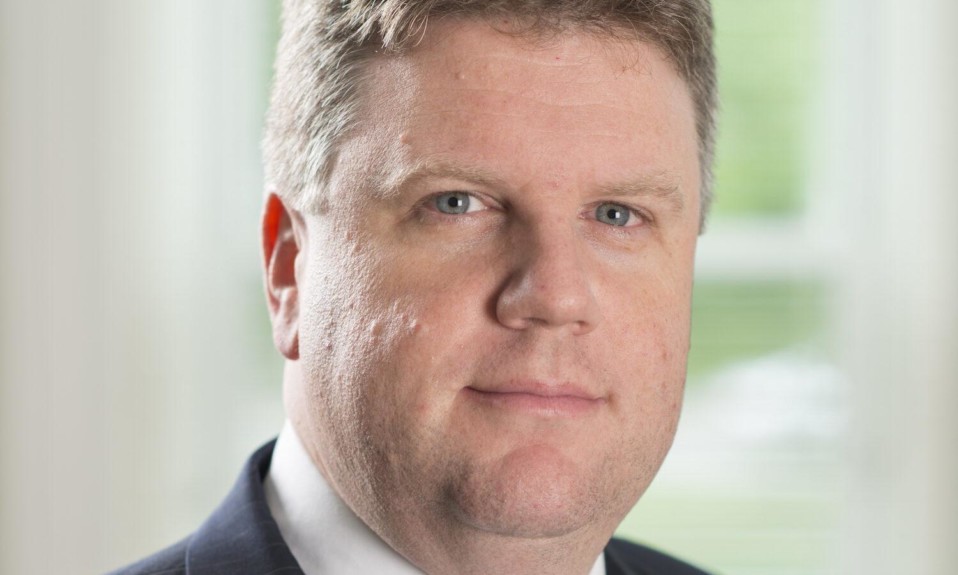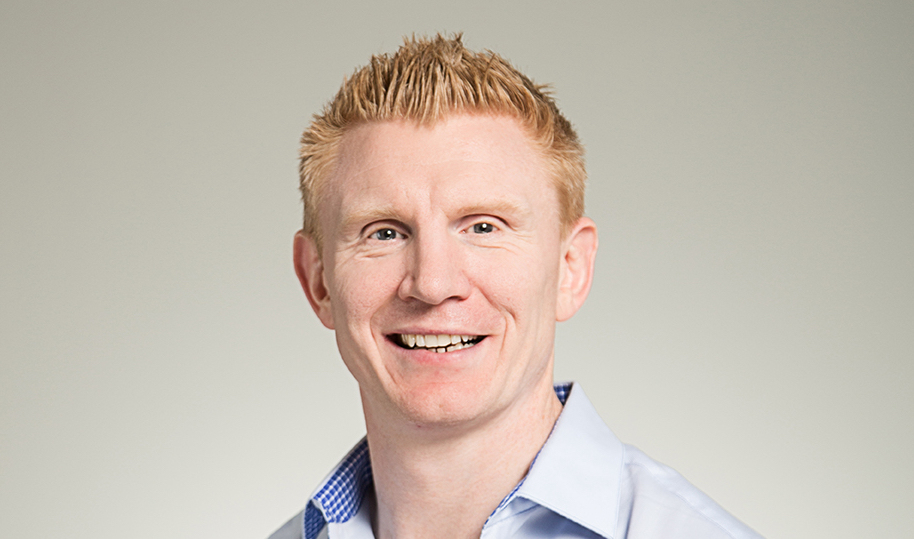President and Medical Director Andrew Gerber on his center’s evolving approach to treatment and how he would elevate policy and outcomes
By Jennifer Taylor
August 19, 2020For Silver Hill President and Medical Director Andrew Gerber, M.D., Ph.D., pivoting to care for his team’s emergent health challenges during COVID-19 goes in stride with the always evolving mental health and addictions industry. And Gerber believes finding solutions to new stressors impacting specific populations means to always be open to the unique needs of all being served at his New Canaan, Conn. treatment center.
“When we’re always looking at what’s the new thing: How can we use technology? How can we use new treatments? How can we train our staff even better? That excites me because it gives me hope that the futures can be brighter.”
Silver Hill Hospital, established in 1931, sits peacefully on 42 acres in the quiet countryside where it has operated independently as a not-for-profit treating more than 3,500 patients annually for psychiatric and addictive disorders through inpatient, transitional living and outpatient care. The center treats the needs of adults, adolescents, and executives and professionals separately on its campus with a range of approaches including its cornerstone of treatment in the Transitional Living and Intensive Outpatient programs—dialectical behavior therapy, which provides patients with the skills necessary to regulate emotions, control destructive behaviors and improve interpersonal relations.
Treatment Magazine talked to Dr. Gerber about his vision for Silver Hill, his philosophy of managing staff and offering customized care, and how he is planning to help elevate outcomes for patients, staff and the industry.
Q: How did you first get into the addiction treatment field?
A: We approach patients in all of their individuality and figure out how we can offer treatments that can support them. That’s the kind of psychiatry I was trained in and wanted to do. It’s the kind of humanistic approach to people I believe in, so it felt like a natural match to come and do that here at Silver Hill.
Silver Hill, early on in its history, noted two very important things. One, that mental health and addictions often go hand-in-hand. In a very high percentage of individuals who suffer from depression, anxiety and other mental difficulties, there is an aspect of addiction that runs through that. To effectively treat mental illness, you have to be able to treat addictions.
And, all of what I just said could be said the other way around as well. That in those with addictions, a very high percentage have psychological difficulties particularly around depression and anxiety. To successfully treat the addiction, you have to address their mental illness. To me, that’s why, if you do one, you really need to be good at the others, as well.
Q: How does Silver Hill uniquely approach treating addiction?
A: First, we have always taken a very patient-centered approach. We have not gotten swept up into one fad or another and only done a certain kind of treatment.
Second is we’ve always highly valued a sophisticated level of professional involvement. As addiction treatments have spread throughout the country, most of them have utilized heavily people with lower amounts of training. Maybe a doctor would come once a week or a couple times a week to see the patients, but that was not a principle mode of the treatment. We believed from early on that you needed to have doctoral-level folks, that is M.D.s and Ph.D.s, at the highest levels of training [and] involved in the daily care of our patients.
We have around 15 psychiatrists on our staff in addition to Ph.D. psychologists and other very highly trained individuals. That’s more than almost all of the other treatment centers out there. We feel like that level of training is needed to care for complex patients.
The last is we’ve always been fortunate to have a wonderful environment. We have this 42-acre campus, which is good for the body as well as the mind, and has been a kind of respite for the patients who come.

Q: What treatment therapies and approaches does Silver Hill use?
A: The treatment approach that has been shown to work and that has benefited patients, we will do. There is nothing we will rule out on any kind of principle. Obviously, we do focus on things for which there is good evidence, but we do a multiplicity of treatments.
“We are in the process of launching an interventional psychiatry program. That’s a new term that’s been introduced only in the last several years to describe a range of biological approaches that are distinct from standard medication.”
For example, that includes the use of psychotherapy, which is very well shown to work. It includes the use of 12-step programs, including both AA and Smart Recovery, which are both very effective. It includes the use of medication for psychiatric illness and also medication for addiction, called medically assisted treatment, which not all treatment centers do.
We also include wellness interventions—physical therapy, exercise, recreational therapy, yoga and spiritual interventions—as parts of our larger holistic approach because we know they are very effective in helping our patients.
Q: What are you working on innovating at Silver Hill as you think about what your patients and clinicians need next?
A: It’s imperative we constantly innovate. Even though psychotherapy has been available in one form or another probably for thousands of years, there is a lot of strong work out there to innovate new evidence-based psychotherapy.
New Psychotherapy Fellowship: We recently started a new psychotherapy fellowship, in which we have doctoral-level psychiatrists, psychologists, social workers and nurses come in and we train them in new forms of psychotherapy. We use the fellowship as a vehicle to bring trainers onto campus and have not just the fellows, but the rest of our staff trained in new forms of evidence-based psychotherapy.
New Assessments: We are in the process of opening a new assessment program that would make use of top experts around the country and bring them in via televisits, which is a silver lining of the COVID epidemic. It has gotten more common and people are more open to them than they were before. We used national experts to come in as part of the assessment program we do, typically an eight-day program for patients with complex issues, and get a full workup and, ultimately, a set of recommendations for treatment. That’s an innovative approach to really zooming in and focusing on assessment, even before you get to the treatment phase.
Interventional Psychiatry: We are in the process of launching an interventional psychiatry program. That’s a new term that’s been introduced only in the last several years to describe a range of biological approaches that are distinct from standard medication. The one that’s most commonly known that gets folded in is electroconvulsive therapy. But the ones that are less commonly known are transcranial magnetic stimulation and ketamine which is a new and quite exciting treatment for a range of disorders.
Psychedelics: The most experimental components of the interventional psychiatry program would be the use of psychedelics as a way to assist in psychotherapy. The last one I’ll mention is more a digital-assisted means of providing treatment, meaning we can use wearables and cell phones as a way to gather information from our patients that we might not get and also as a way to stay in touch and continue to administer treatment, even after they’ve left.
So, we’re looking into a range of different options for those and hope to have that rolled out with our patients relatively soon.
Q: What would you like to be able to change about the treatment industry?
A: I wish there was less ideology and more collaboration around data and outcomes. I think we have so much more to learn by working together and sharing our experiences of what works and what doesn’t work for a variety of patients. Rather than arguing with one another and trying to prove one treatment is the silver bullet versus another, the real answer is both treatments are helpful. The goal is to come together and make them available.
I do see progress made and one of the very enjoyable experiences in this job is getting to know the leaders of other treatment centers. I find that more and more these days when I meet them, they want to collaborate. It’s not about who gets the patient or whose treatment approach is right and whose is wrong, but more about how we can join forces and help more people.
“Ultimately, what matters is not just how they are doing on the day that they go home, but how they are doing six months later, a year later, or a year-and-a-half later.”
Q: Elevating outcomes is one of the signature goals and opportunities of our treatment industry. How are you and Silver Hill tracking outcomes for your patients?
A: Traditionally in the field, clinicians responsible for the patients record how patients are doing, when they’re improving, when and they’re having difficulties. However, what we know is that standardized math measures for a measuring outcome are also necessary. Because sometimes, a clinician report, even with the best of intentions is biased based on what they want to see or based on what the patient may be telling them at a given moment.
If you really want to assess this from a more objective standpoint, you need to have some of independent measures. We adopted a standardized system and it’s based in a product called MIRAH, which has been used by Vanderbilt [University]. MIRAH is an online platform that allows us to administer measures to patients, which we do so on admission, during their stay, at discharge, and to track how they do on a range of measures all across treatment. We have already launched that successfully in our adolescent service line. Our goal within the next six months is to have it all across the hospital.
The other goal is to continue assessments after patients leave. Ultimately, what matters is not just how they are doing on the day that they go home, but how they are doing six months later, a year later, or a year-and-a-half later. Now, historically, that’s very hard to do. A lot of places have tried and failed.
That’s one of the reasons why using digital means is so important. If you want to stay in touch with people, there’s no better way to do it than via their cell phone. We’re hoping to get to the point relatively soon where when people go home, they’re not just getting services from their phone, but also a way to record how they’re doing and we feed that back into the system.
Q: How can the treatment industry as a whole level up treatment outcomes, in your opinion?
A: I think there has to be more collaboration across [treatment center] sites. When you get data from just one site—and increasingly this is something that the treatment centers are doing, measuring and then publishing their data—it’s very hard to know how to interpret it because you can’t compare it against others. And as you might expect, treatment centers are going to put up the best results that make their treatment look the best and that’s understandable.
But as a consumer, if everybody just tells you what’s best about [their treatment] there’s some value in it, but it doesn’t get to the range.
Ultimately, I would hope that there is a standardized battery that all treatment centers are required to use, and they’re required to report results in a standardized way. Even better, would be not just on their own website, but on a joint website and make comparisons across site.
That obviously is scary to treatment centers, but, ultimately, it’s what consumers need to be able to do. Increasingly in the medical world, this is now required by the government. And, if you’re going to have certain kinds of operations, you can check the data about outcomes at different health centers. It’s never happened in the mental health or addiction space, but it should. I think that’s going to come from collaboration and cooperation and it can take some doing, but we’ll get there.
Q: What is the No. 1 policy change you would like to make if you were in charge of our country’s laws and healthcare?
A: We need to fund the full continuum of care for mental health and addiction. Right now, the funding system is built to focus on very specific moments of care. So for example, there’s funding for short-term hospital stabilization. There’s funding for the opposite end of the spectrum for once-a-week psychotherapy, or once-a-month psychopharmacology. But, there isn’t funding for the full continuum. We believe that residential stays are important steps in the recovery of individuals. Our current system discourages those because they don’t fund them adequately.
There’s been a lot of hope that could emerge out of our current insurance industry. As time goes by, I get increasingly discouraged that our current healthcare system model in this country is ever going to be able to adapt to what we need. I do believe a single-payer system is more likely to give this kind of reimbursement for the full range. I don’t care what system we have as long as it provides adequate reimbursement for high-quality care.
And that we just don’t have a right now. That creates a system that’s chronically underfunded, and ends up not giving treatments for people who can’t afford to pay privately and even for those who can pay privately. It exposes them to all sorts of pressures that discourages them from getting the full range of treatment that they need.
Q: How do you personally avoid burnout and keep up your momentum when the going gets hard?
A: Everybody has their own way of doing it. For me, I rely heavily on my family. Having time with them in the evenings and weekends, on vacation, is what really preserves my health and sanity. What keeps me excited is always thinking about what [Silver Hill] can do next. Because if we just stayed the same, and we didn’t try to innovate, I think I would get discouraged.
When we’re always looking at what’s the new thing: How can we use technology? How can we use new treatments? How can we train our staff even better? That excites me because it gives me hope that the futures can be brighter.
Q: What is the No. 1 lesson you have learned after 19 years in the addiction treatment industry?
A: That the norm is change. The things that I was learning and doing in 2001 are very different from what I’m learning and doing in 2020. There are common principles: the importance of relationships, the importance of being patient-centered, importance of doing research and being rooted in data. Those haven’t changed. But, the details of what medicines we use, what psychotherapies we use, how we work with different patients, that changes quite regularly. I keep learning and you keep changing based on what’s most helpful to your patients.

Q: And finally, this is a question we’re going to be asking every treatment center leader. After working at Silver Hill and in this industry as long as you have, what advice would you offer a rising leader. What’s your TTT: your Top Treatment Takeaway?
A: Don’t confine yourself to learning only one way to treat patients. You need to learn multiple approaches. What makes a great clinician is somebody who’s good at lots of different things, and then can appropriately use the right aspects of each treatment depending on the patient.
That’s harder and it’s certainly intellectually more challenging to learn multiple things.
You have to be careful not to confuse them or not to push them all into a big mess because the answer is not just do whatever you want. The answer is learn good approaches separately, but have them all in your quiver.
Basically, have a lot of arrows in your quiver. I think that’s the hardest thing for treaters to do. And, to avoid being biased or making assumptions. Just because you like to do one [treatment], doesn’t mean it’s the right treatment for everybody.”














